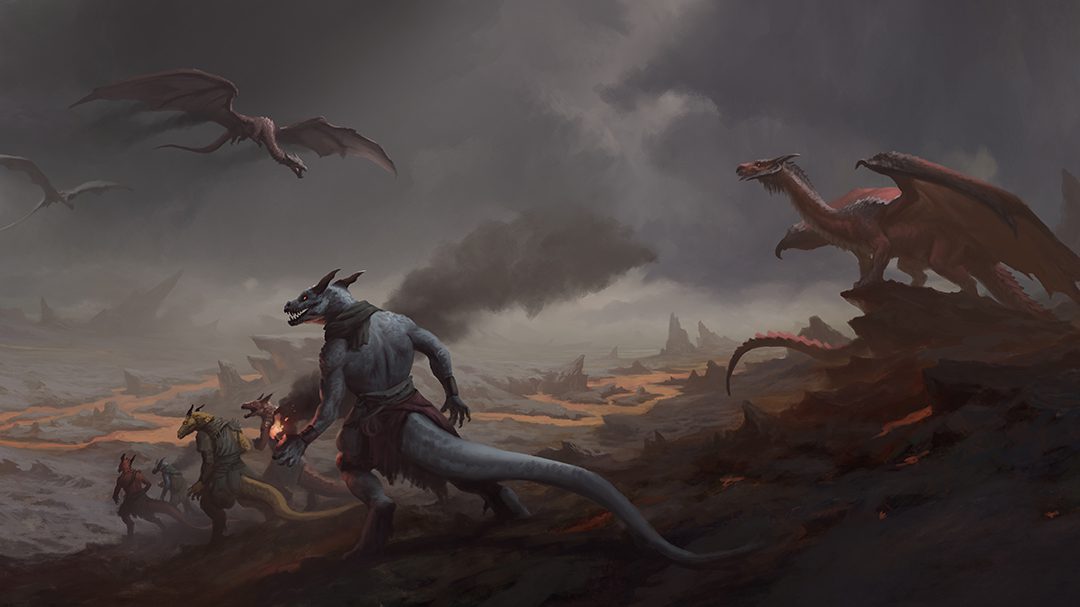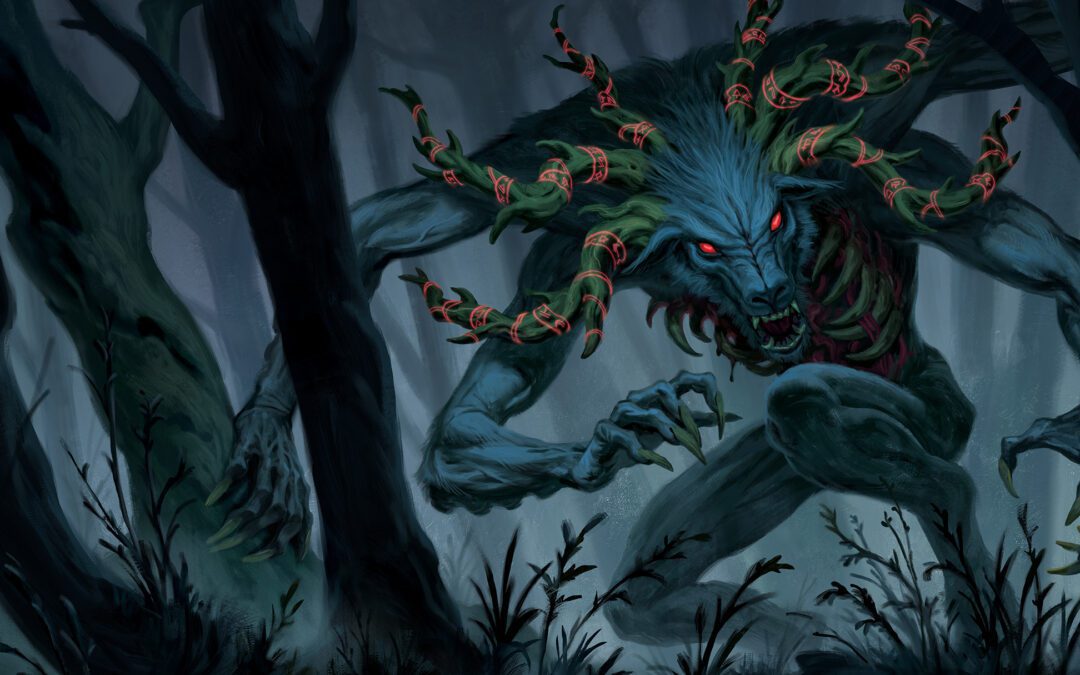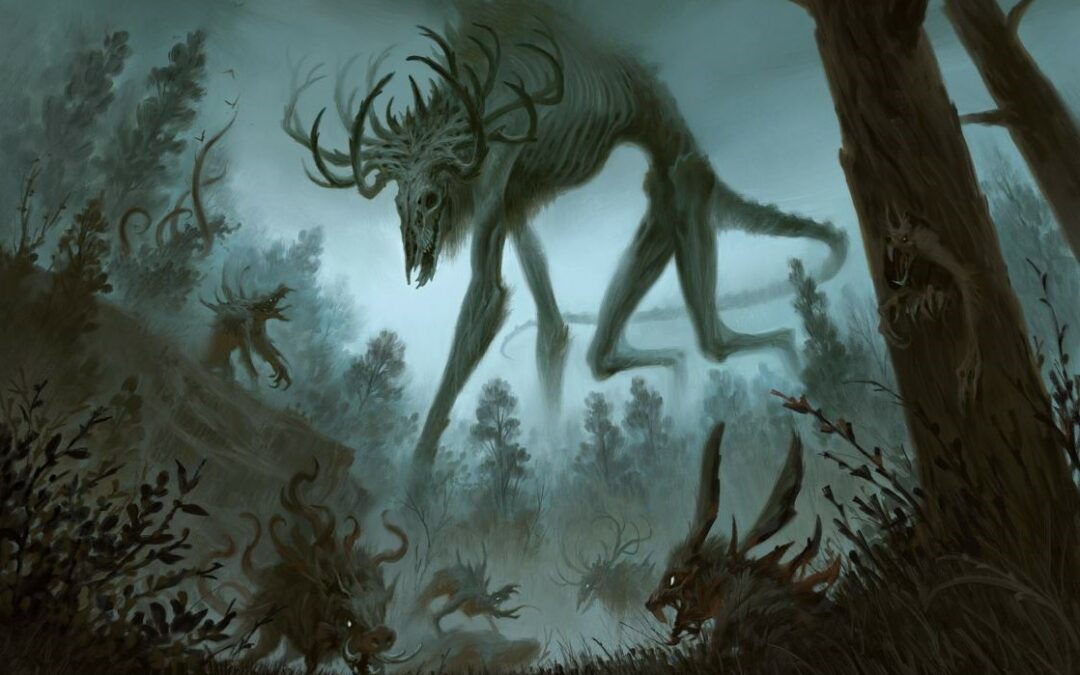
Dungeons & Dragons, the name says a lot. There are dungeons and there are dragons within those dungeons.

Artist: Brent Hollowell
But really, it’s what happens before you reach the dungeon that makes an adventure feel like a journey. Sure, you could drop your party of mighty adventurers right outside the door of the evil dragon overlord’s fiery fortress that teems with savage minions ready to rip them to pieces, but what investment do the players have in the adventure at that point? Well, not a heck of a lot.
What builds investment in a campaign is the journey the player-characters underwent to reach their ultimate destination. The challenges on the road that needed to be overcome. The risky paths taken trying to find a shortcut. The opportunity to uncover secret locations, and characters growing due to unexpected discoveries.
All of these are part of a full story arc that leads towards that climactic battle against the evil dragon overlord. When the story is told in full the stakes of that final scene feel so much higher and the reward so much fuller. The player-characters feel truly deserving of being called heroes, because of all they experienced before making it to this final confrontation.
Supporting the journey through base 5e can be tricky, however, because exploration is one pillar of play that sorely lacks the mechanical rules to support it. During the making of Arora: Age of Desolation we recognized this, and we realized early in development that we would need a detailed mechanical system that would support exploration through the different regions of the world that we were creating.
We quickly set to task the fabulous Cody Faulk who really took the problem and created a system that not only gave defined rules to run exploration of regions for Arora, but one that was both fun and setting agnostic enough to be able to use in any 5e campaign.
There were two main things that this system needed to achieve. The first was to stay away from boring hex crawls. The second was to gamify the exploration pillar rather than just providing some suggestions for narratively handwaving it.
Stay Away from Repetitive Hex Crawls
Tomb of Annihilation is a fantastic and massively popular campaign module for 5th Edition. Yet it’s no secret that for many groups the hex crawl element of the adventure can quickly become boring. It never really advances the overarching story, and day to day travel becomes very samey until the party eventually reach the city of Omu.
This leads to GMs using the random encounter daily rolls for the first handful of adventuring days before ending up handwaving large parts of the jungle exploration just to keep the story moving. Omu is where the adventure picks back up again. The problem here is that once the GM begins to handwave a lot of that travel, the exploration pillar of play begins to crumble, and the players never really get a sense how vast the jungle is or an opportunity to truly explore it.
When designing Arora: Age of Desolation, and in particular the Exploration System, the first thing we wanted to do was move away from hex crawls as an option. Instead, Cody designed a system where a realm is divided into regions that the characters could travel between.
A region can be small, medium or large, and each has a variety of interesting features and locations. Locations could be obvious and easy to access, only rumored about in tales, or entirely secret and undiscovered.

Artist: Quintin Gleim
An example region could be a snowy mountain range, which features a wide and obvious road through for travelers just passing by. There is a castle beside the road that is also obvious, but few have journeyed inside. There may be rumors of a monk monastery high on the mountain cliffs that is difficult to reach. Perhaps there is a secret dungeon below the mountains that has been long forgotten to time.
There is no specific limit on how many features or locations a region could have. Each feature also carries a danger rating, indicating some places are more treacherous to explore than others!
When entering a region, the player-characters may already have some idea on what features exist and where they might want to go. This can be accomplished through research before setting out. However, the only way to truly know a place is by going there and exploring it.
Gamify Exploration
Journeying in 5e often boils down to a narrative told by the GM that ends with the characters reaching their destination. We felt this method of playing the exploration pillar could feel a little “montage-like” and take the players out of the immersive game. So, the next problem we had to solve was how to gamify exploration to keep the players engaged in a game playing experience.
Enter, Region Sheets.
With the Arora exploration system, each region that the characters explore has its very own region sheet. This is basically a character sheet for an entire geographic region. It has entries for all interesting features and locations found within the region, which include details about those locations and features such as their danger rating.
At first the GM creates the region using their imagination or the tables provided within the book itself and fills out their region sheet completely. Then the GM hands the players their very own blank region sheet with only the region name at the top of it completed.
This blank region sheet gives the players a goal now, something to which they can achieve, and that is to complete the sheet. To do this there are two main methods the party can undertake.

Artist: Brent Hollowell
The Research Phase of the exploration system is when players learn about a region they wish to explore by gathering rumors, reading about a region’s history, or asking knowledgeable NPC’s. Each activity requires an ability check, and how successful player-characters are determines how many Discovery Points they earn. These points can then be spent to fill in information on their copy of the region sheet.
However, while this information can be useful not all rumors are entirely accurate or history books up to date. As such, before the player-characters can visit locations and features they’ve researched, anything they learn is labelled as “rumor” until it can be verified.
Next, the exploration system enters the Exploration Phase. This is when the party finally travel to the locations in a region they’ve learned about through research. The players have a partially completed region sheet and so know some information about where they’re exploring. But the locations are all currently just rumored. Players will need to verify to make sure these locations exist, and their information about each location is indeed correct.
By giving the players a blank region sheet they are tasked with completing, and by using skill checks and spending discovery points to do so, the exploration pillar becomes a sub-game within the larger game of 5e.
With the Arora: Age of Desolation Exploration System, the players are now immersed in the feeling of discovering and exploring unknown places for themselves. And this has been a sneak peak of how we designed a system intended to bring the exploration pillar back to the forefront of your 5th Edition experience.

![Grim Hollow: The Player's Guide [PDF]](https://b2358178.smushcdn.com/2358178/wp-content/uploads/2021/02/Grim-Hollow-players-Guide-PDF-600x600.jpg?lossy=1&strip=1&webp=1)


Sounds fun! I Can’t wait to play.